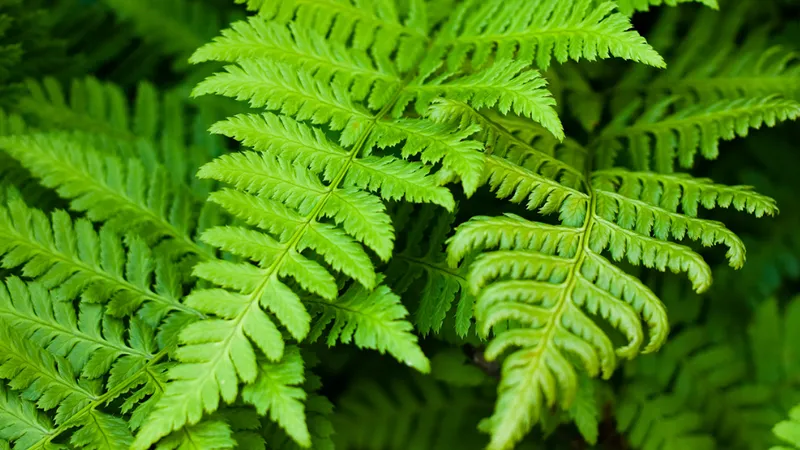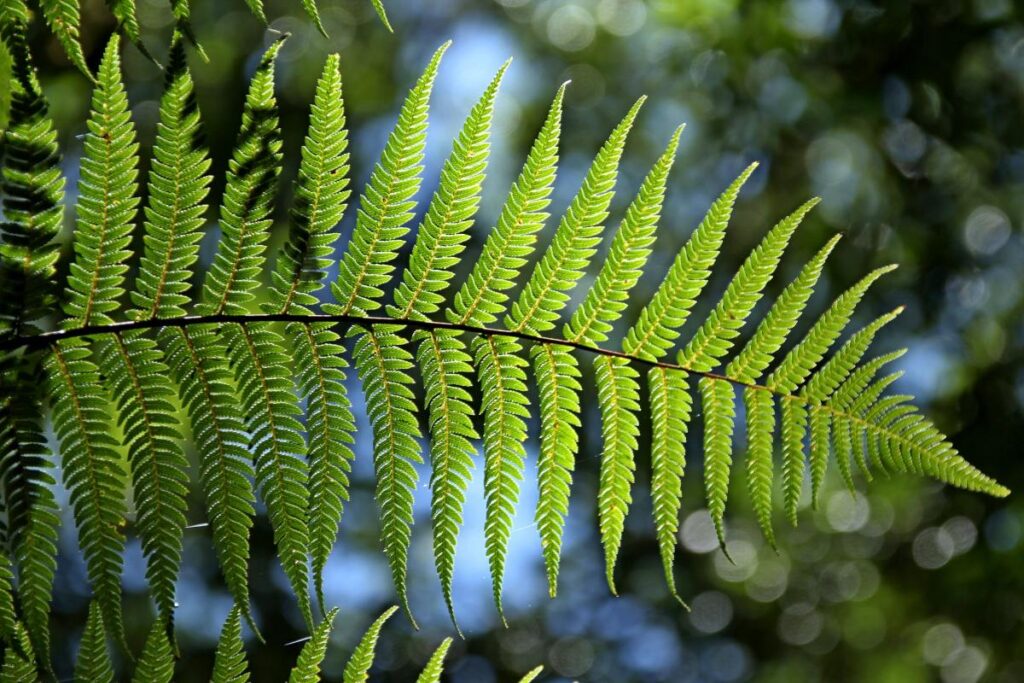An Exhaustive Aide Fernshave existed for in excess of 350 million years, making them one of the most established and most strong plants on The Ferns. These non-blooming Ferns have gotten the imaginative psyche of botanists, maintenance people, and nature fans the equivalent in light of their rich foliage and ability to prosper in various circumstances. In this article, we will talk about the biological meaning of greenery plants as well as their particular qualities, assortments, and care prerequisites.
1. How do Ferns Function?
Vegetations are a social occasion of vascular plants that reproduce through spores rather than seeds or blooms. They have a spot with the division Pteridophyta and are perceived by their bewildering life cycle which integrates both a sexual and abiogenetic stage.
a. The Structure of Plants Greeneries are distinguished from other types of plants by a remarkable design:
- Fronds: The fronds, or leaves, of greeneries commonly have a plume like appearance and are much of the time enormous, separated. They ascend out of the ground or a central rhizome and spread out in a brand name contorting known as a “fiddlehead.”
- Rhizomes: Rhizomes which are underground stems that store supplements and produce fronds are ordinarily tracked down in greeneries. The rhizome is also responsible for vegetative growth in some plants.
- Spores: Greenery mimics blooming plants through spores which are carried in structures known as sporangia and typically found on the undersides of the fronds.
2. The Greenery’s Life Cycle:
The plant’s life cycle is interesting and convoluted on the grounds that it incorporates both agamic and sexual generation. The rotation of ages is the name given to this life cycle, which has two particular stages: the gametophyte and sporophyte.
a. Sporophyte Stage
The sporophyte is the common stage in a vegetation’s life cycle. It is the regular verdant plant that we see as a vegetation. The fern’s sporangia undergo meiosis during this stage to produce spores.Read More
b. Gametophyte Stage
A gametophyte is a small, heart-shaped structure that comes from spores. This stage is liable for sexual multiplication and exists freely of the sporophyte. The gametophyte releases sperm and eggs through male and female sex organs.

3. Sorts of Ferns
Plants are awesomely unique, with in excess of 10,000 species portrayed into various families. They can be tracked down in many circumstances, each with novel varieties that license them to thrive. The following are a couple of ordinary kinds of vegetations:
a. Greeneries from the Tropics
Greeneries from the Tropics are typically found in warm, sticky places like rainforests. Because of their large, lush fronds, they are frequently used as ornamental plants in gardens and homes.
- Bird’s Home Vegetation (Asplenium nidus): This fern has large, unbroken fronds that look like a bird’s nest. It prospers in low light and high tenacity, making it ideal for indoor turn of events.
- Staghorn Platycerium Fern: With its exceptional, horn like fronds, the staghorn plant life is generally speaking mounted on sheets or hung from compartments, adding a close to home touch to any space.
b. Quiet Ferns
Quiet plants are acclimated to cooler conditions and are ordinarily found in forest areas, woodlands, and abrupt regions.
- Mainhair Fern, which is also called Adiantum: The maidenhair plant is many times tracked down in closeness to streams or cascades and is recognized by its fragile fan-formed fronds. It likes places with shade and moisture.
- Bracken Plant life (Pteridium aquilinum): Maybe of the most unfathomable plant, the bracken vegetation is strong and adaptable, filling in various conditions, including open fields and boondocks.
c. Desert Ferns :
Desert ferns are plants that have adapted to live in dry environments. During droughts, they frequently go lethargic, yet when dampness returns, they reawaken.
- The resurrection fern, Pleopeltis polypodioides: This vegetation can persevere through over the top drying out, appearing dead during droughts yet “resuscitating” when introduced to water.
- Astrolepis Shroud Greenery: Nearby to very dry locale, the cover plant life has a thick, rough surface that helps it with holding moistness.
4. Care for Ferns:
Ferns are popular houseplants due to their attractive foliage and relatively low maintenance requirements. Notwithstanding for them to thrive explicit consideration needs should be met.
a. Light Necessities
Plants overall incline in the direction of winding light, as prompt sunshine can burn their delicate fronds. Plants should be placed in an area with partial shade or filtered light. Tropical plants, explicitly, prosper in lower light conditions, making them sensible for indoor circumstances.
b. Watering and Clamminess
Overwatering can result in root rot, while underwatering can result in wilting and browning of the fronds. The majority of ferns also prefer high humidity, so misting the plant’s leaves or placing it in a humidity tray can help ensure that the soil retains the appropriate amount of moisture.

c. Soil and Planning
Plants prosper in well-draining, rich soil. The best climate is provided for their foundations by a combination of perlite, topsoil, and peat vegetation. During the growing season, it is beneficial to fertilize ferns monthly with a half-strength, balanced, water-soluble fertilizer.
d. Pruning and Backing
Regularly take out any dead or yellowing fronds to engage sound turn of events and hinder infection.
5. The Significance of Greeneries for the Climate Ferns assume an essential part in environments everywhere. They assume a part in the pattern of supplements, give living space to different species, and help in the development of soil. Furthermore, plants are bioindicators, and that implies that their presence or nonappearance can show changes in the climate, like degrees of contamination or environment aggravation.
a. Soil Plan and Crumbling Control
Ferns add to soil improvement by isolating stone through their underground roots and adding normal have an effect on the soil as their fronds decay. In forested locales, vegetations can help with preventing soil deterioration by offsetting the ground with their wide root associations.
b. Domain and Biodiversity
Plants give an area and food to various living things, including bugs, birds, and little vertebrates. In tropical rainforests, vegetations add to the rich biodiversity by offering safe house and resources for vast species.
Conclusion:
Greeneries are a significant collection of plants that play an important environmental role and have a long history of transformation. Whether you are a painstakingly pre arranged nursery laborer or a plant darling creating vegetations can be a remunerating experience. They are ideal increments to any garden or indoor space because of their range of structures, flexibility, and low support necessities. You can partake in the magnificence and advantages of these old plants in your own home assuming that you understand what compels them exceptional and what they need.







